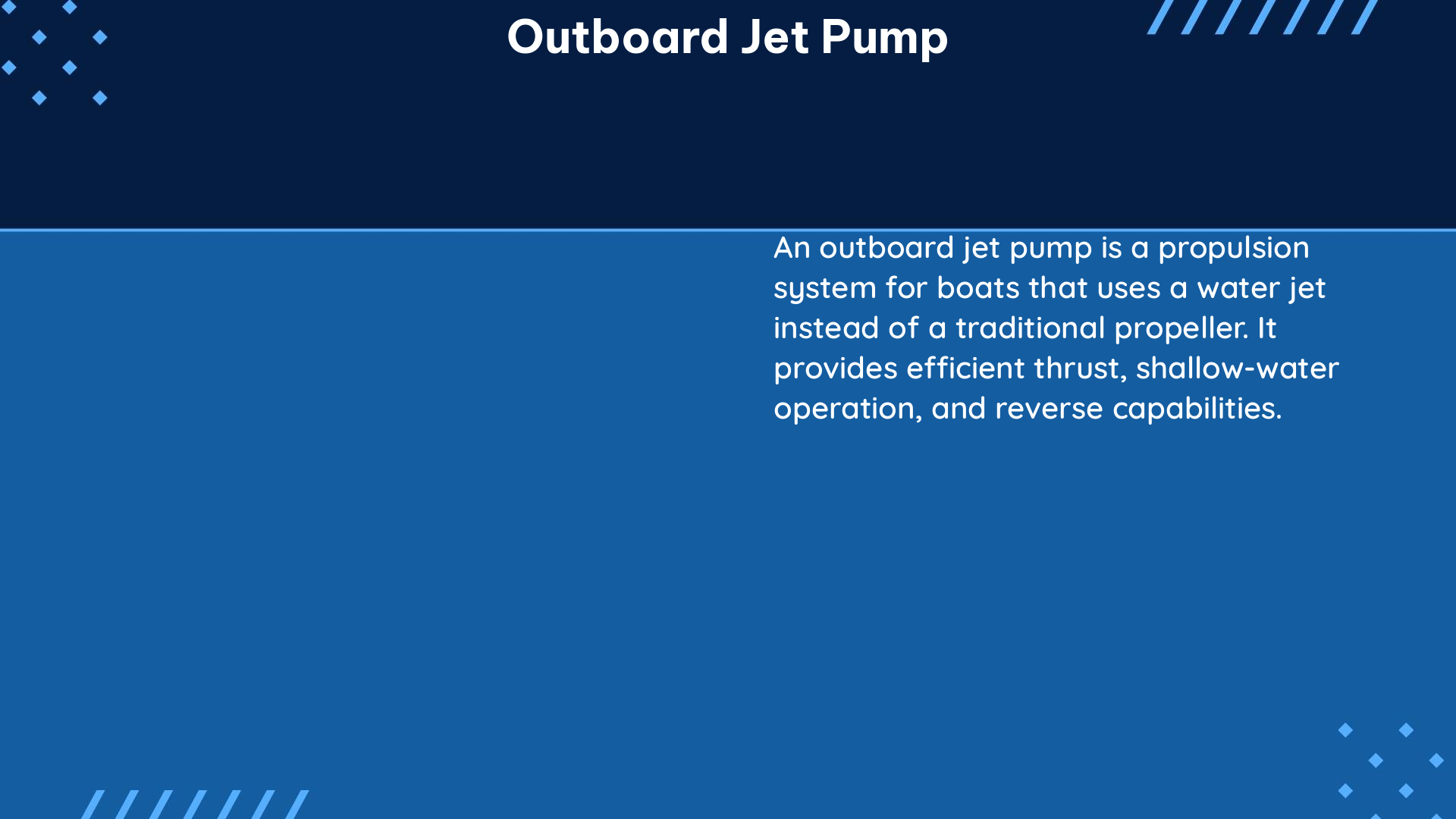Outboard jet pumps are a unique and specialized type of marine propulsion system that offer several advantages over traditional propeller-driven outboards, particularly in shallow water or debris-filled environments. However, understanding the technical specifications and performance characteristics of these systems can be challenging, as the data is often scattered across various online forums and discussions. In this comprehensive guide, we will dive deep into the measurable and quantifiable details of outboard jet pumps, providing a valuable resource for boaters, mechanics, and enthusiasts alike.
Horsepower Ratings and Power Loss
One of the key considerations when evaluating outboard jet pumps is the relationship between the engine’s horsepower (hp) rating and the actual power delivered at the pump. According to industry sources, outboard jet motors are typically rated at the pump, not the cowling. This means that a 40 hp jet pump may actually have a 60 hp powerhead, while a 20 hp jet pump may have a 25 hp powerhead. This discrepancy is due to the power loss inherent in the jet pump system.
The degree of power loss can vary significantly between different jet pump manufacturers. Some sources suggest that Mercury Sportjet/Optimax pumps may only experience a 10% power loss, while other pumps can see power losses of around 30%. However, it’s important to note that the specific measurements or data points supporting these claims are not always readily available.
Impeller Specifications

The impeller is a critical component of the outboard jet pump, as it is responsible for generating the high-pressure water flow that propels the boat. The technical specifications of the impeller, such as diameter and pitch, can have a significant impact on the pump’s performance.
For example, the Mercury Sportjet 150 has an impeller diameter of 5.125 inches and a pitch of 12 degrees, while the Yamaha HPDI 180 has an impeller diameter of 5.5 inches and a pitch of 14 degrees. These differences in impeller design can affect the pump’s flow rate, pressure, and exit velocity, which in turn impact the overall performance and efficiency of the system.
Jet Pump Dyno and Performance Measurement
One of the challenges in accurately assessing the performance of outboard jet pumps is the lack of standardized testing methods. While the idea of a “jet pump dyno” has been discussed in various online forums, it’s unclear whether such a specialized testing apparatus actually exists in the industry.
A jet pump dyno, in theory, would be able to measure critical performance parameters such as flow rate, pressure, and exit velocity at different RPM levels. This data could then be used to compare the efficiency and power delivery of various jet pump models and manufacturers, providing valuable insights for boaters and mechanics.
Efficiency Comparisons
When it comes to the overall efficiency of outboard jet boats, the available data is somewhat limited. Some sources suggest that jet boats can experience a significant reduction in efficiency, potentially as high as 30% or more, compared to sterndrive or traditional outboard-powered boats.
However, the specific data points and measurements to support these claims are not always provided. It’s important to note that the efficiency of a jet boat can be influenced by a variety of factors, including the specific jet pump design, the boat’s hull shape, and the operating conditions.
Manufacturer Differences
As mentioned earlier, different jet pump manufacturers can have varying levels of power loss and efficiency. This highlights the importance of considering the specific performance characteristics of different jet pump models when making a purchasing decision.
For example, the 10% power loss associated with Mercury Sportjet/Optimax pumps may be a significant advantage over other pumps with higher power losses. Understanding these manufacturer-specific differences can help boaters make informed choices and optimize the performance of their outboard jet-powered vessels.
Conclusion
Outboard jet pumps are a unique and specialized type of marine propulsion system that offer several advantages in certain boating scenarios. However, understanding the technical specifications and performance characteristics of these systems can be challenging, as the data is often scattered and incomplete.
By delving into the measurable and quantifiable details of outboard jet pumps, this comprehensive guide aims to provide a valuable resource for boaters, mechanics, and enthusiasts. From horsepower ratings and power loss to impeller specifications and efficiency comparisons, we’ve covered a wide range of topics to help you make informed decisions and optimize the performance of your outboard jet-powered vessel.
Remember, as with any complex system, it’s important to consult with experienced professionals and conduct thorough research before making any major modifications or purchasing decisions. Happy boating!
References:
– Refuge Forums – How Do They Rate HP on Outboard Jets?
– The Hull Truth – Outboard Jet Drives
– Performance Boats – Jet Pump Dyno
– Jetboaters.net – Jet Boat Loses 30% Efficiency or Worse
– IFish.net – Jet Pump Efficiency

The lambdageeks.com Core SME Team is a group of experienced subject matter experts from diverse scientific and technical fields including Physics, Chemistry, Technology,Electronics & Electrical Engineering, Automotive, Mechanical Engineering. Our team collaborates to create high-quality, well-researched articles on a wide range of science and technology topics for the lambdageeks.com website.
All Our Senior SME are having more than 7 Years of experience in the respective fields . They are either Working Industry Professionals or assocaited With different Universities. Refer Our Authors Page to get to know About our Core SMEs.